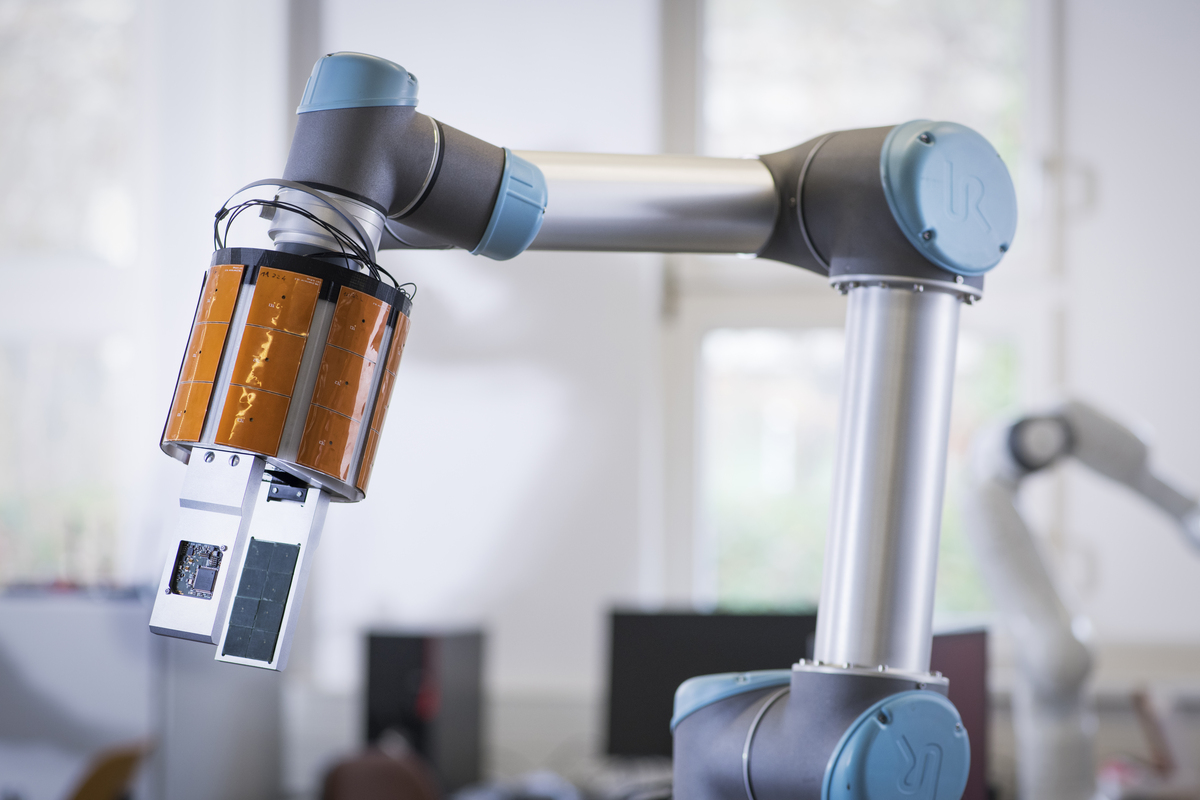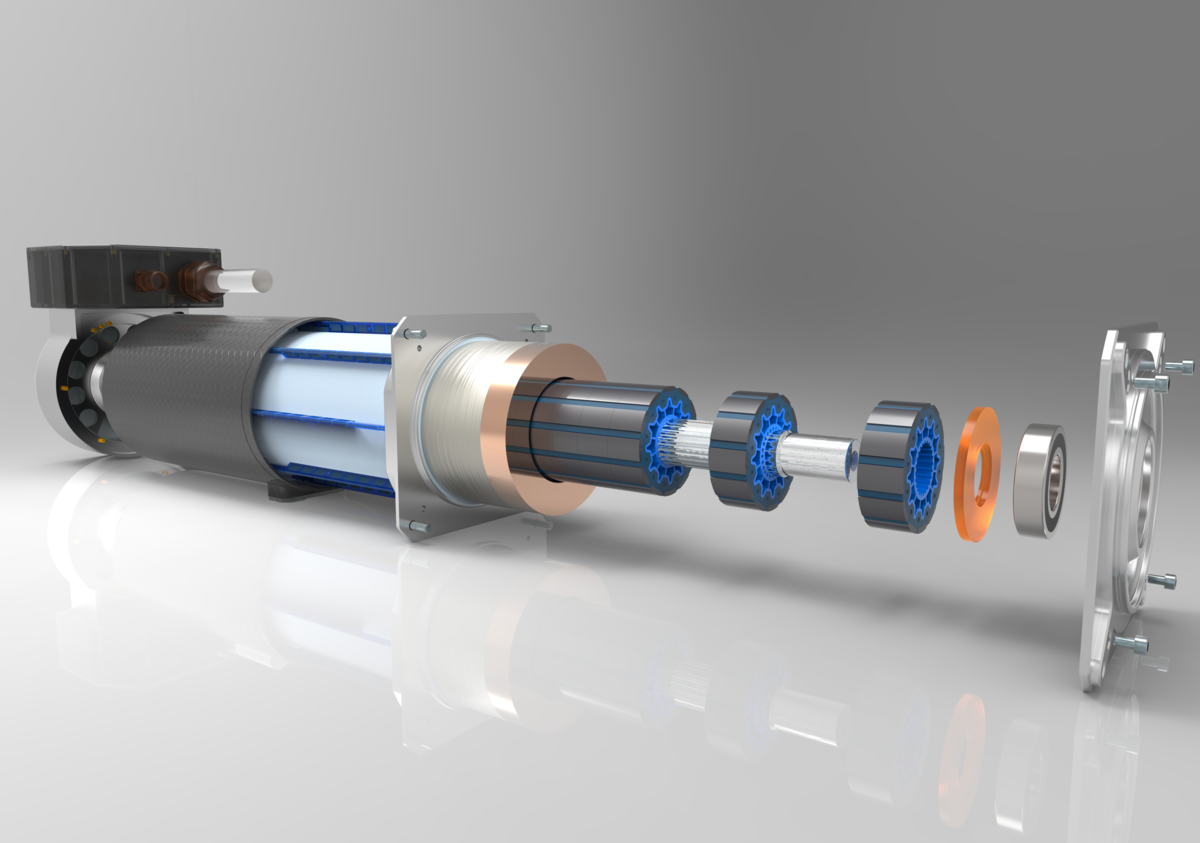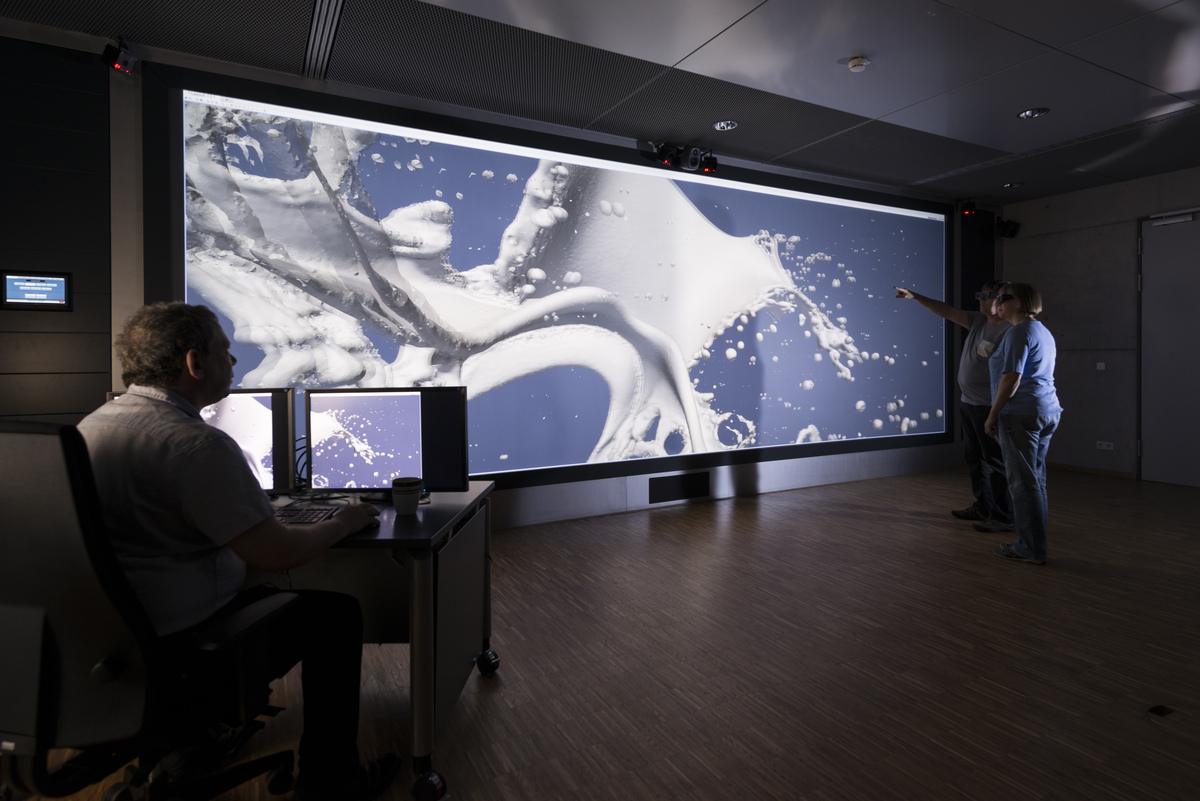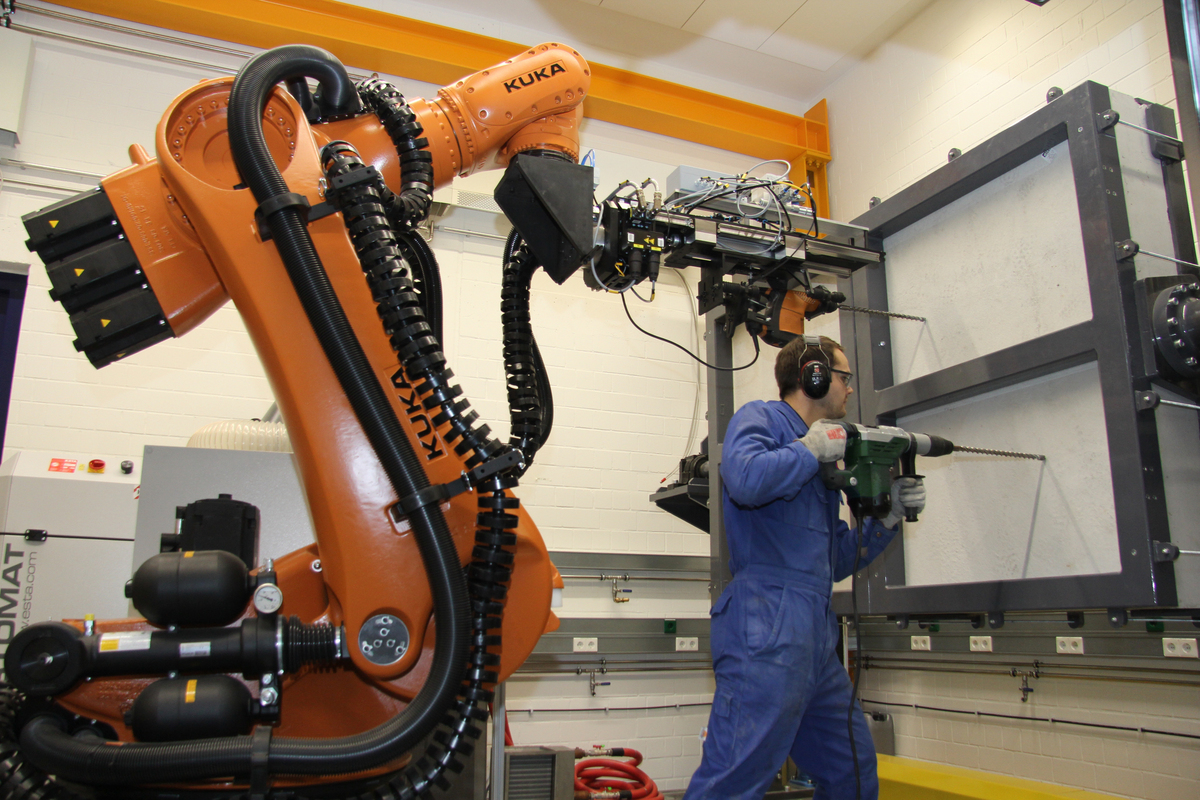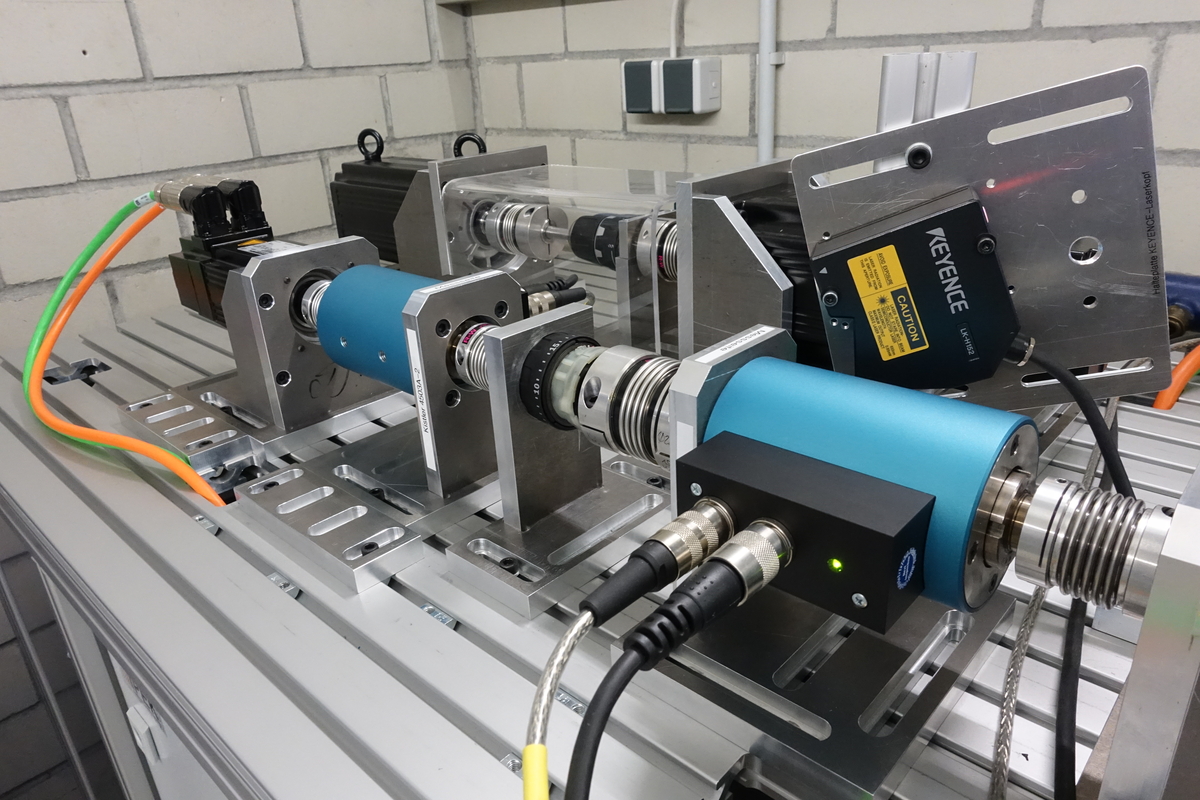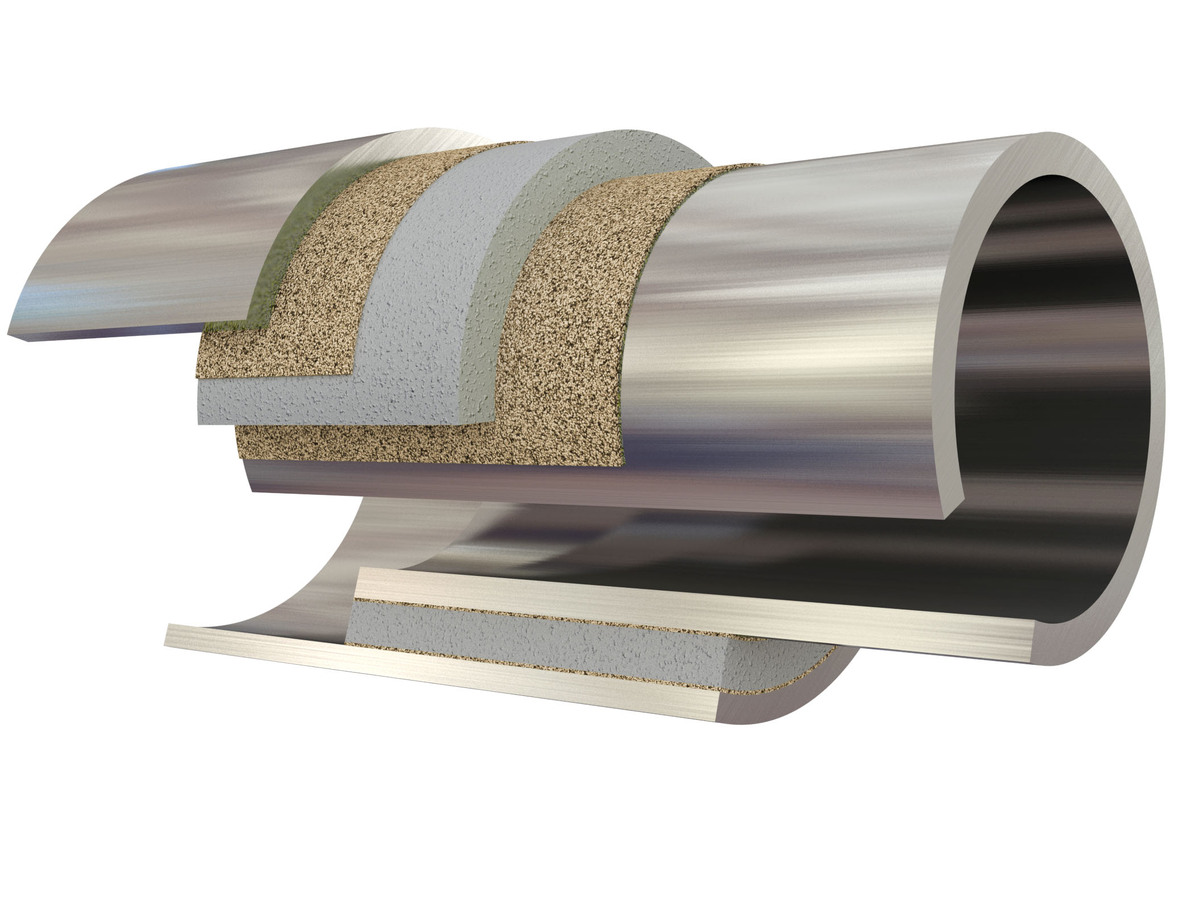CTPS: Multimodal Sensor Technology for Industrial Robots
Intelligent robots perceive their environment and react to it. For this, they need sensors that simultaneously detect different physical events. However, sensors that have been applied in arms and grippers of robots so far are mostly limited to one function: They perceive movements either by an approaching object or by contact in the form of pressure. KIT researchers have developed multimodal sensors that detect both simultaneously and, thus, ideally complement optical systems, such as cameras. With such capacitive tactile proximity sensors (CTPS), flexibility and agility of automated industrial production can be increased considerably, safety is enhanced. The sensors are able to detect approaching persons even when cameras are hidden or affected by unfavorable light conditions. As soon as a predefined safety distance is exceeded, they trigger warnings or reduce the speed of the robot. Hence, the CTPS can make an important contribution to safe human-robot collaboration when humans and robots work on the same workpiece at the same time.
Video (in german):
Further information
ProLemo: Production Technologies for Lightweight Motors
Existing electric motors of high performance are optimized for driving machines and plants, which is why their development, construction, and production focus on fatigue strength and service life. Size, efficiency, and weight often play a minor role only. Hence, these motors mostly are too heavy, too large, and too expensive for use in vehicles. Within the ProLemo cooperation project, engineers developed new production technologies for lightweight electric motors and use lightweight construction materials (fiber-reinforced composites, soft magnetic composites). Moreover, they optimized the automatic copper winding process for reaching a high degree of filling. The motor developed by engineers of KIT in cooperation with industry partners is 20% lighter than a reference motor of the same performance class.
Further Information
Research 4.0: Virtual Atomizer Test Rig for Fully Digital Flow Experiments
Flow of fluids and gases plays an important role in a number of industrial processes, an example being gasoline or diesel injection into combustion engines that decisively influences the formation of environmentally hazardous nitrogen oxides and soot. Computer-aided systems for flow simulation are applied to determine optimum flow for certain applications. In case of multi-phase flows, however, conventional methods reach their limits. Researchers of KIT have developed a simulation method based on smoothed particle hydrodynamics, a numerical method: Fluids and gases are divided into mass parcels, called particles, that move according to the laws of fluid mechanics. Flow fields can be simulated true to reality by the movement and interaction of these individual particles. Based on this approach, the researchers have developed a virtual test rig that covers all important steps of flow simulation, from preprocessing of the CAD data to flow computation to visualization. Apart from conventional animation technologies, virtual reality is used to analyze simulation results from all perspectives and to interact with them.
Further Information
IPEK-PTP: Automatic Power Tool Test Lab for Analysis and Modeling of User Influence on Power Tools
As it is difficult to reproduce the interaction of user, power tools, such as drilling machines, and the surface to be machined in test series, tests during the development of new power tools are very complex and expensive. At the Power Tool Test Lab of KIT, these complex interactions can be studied. The core component is the automatic power tool test rig that combines an industrial robot with a mechanical hand-arm model. The robot reproduces active movements of the user, while the hand-arm model simulates the passive influence of the human locomotive system. The tests reduce the scattering of experimental data compared to manual tests as well as the test staff’s exposure to vibrations, noise, and dust. Other components of the Power Tool Test Lab are a user interaction test rig to study vibration properties of the user and the flexible surface positioning system, by means of which the power tools can be tested on various surfaces and with various spatial orientations.
Further Information
IPEK-sCiL: Power-scaled Testing of Prototypes
Product developers, also of e.g. power tools, frequently use product series to reuse components with the same function, but other dimensions and sizes in products of various power classes. Often, however, the prototypes available for product tests have a mechanical loadability that does not exactly correspond to that of the real components in the series product. Engineers of KIT have developed the IPEK-scaled-Components-in-the-Loop approach (IPEK-sCiL), i.e. a method, by means of which prototypes can be integrated in a power test rig and operated in a power-scaled manner. In this way, interactions of existing system components with a virtually integrated physical prototype can be simulated in the test rig. This approach enables early assessment of a complete system, e.g. a power tool, even before all series components are available.
Further Information
Hybrid Adhesively Bonded Joints: Novel Technology for Bonding Structural Components
Currently, structural components made of steel, light alloy, or plastic are joined by welding, screwing, and riveting. However, screw and rivet connections weaken the component, as they require drilled holes. The local energy input during the welding process has unfavorable impacts on geometric stability and fatigue strength. Bonding is not associated with these two drawbacks, but cannot be applied when bonding gap thicknesses are large, as is the case in the construction sector. Scientists of KIT have developed a novel, robust, and low-cost bonding method for structural components, which is not associated with the weaknesses above. This hybrid adhesive bonding method combines inorganic and organic bonding layers and, hence, can be produced at lower cost and, additionally, is characterized by a higher load bearing capacity. It is suited in particular for joining structural components, such as hollow sections made of steel, light alloys, or plastics. Hybrid adhesive bonding can be applied for structural engineering, infrastructural facilities, bridges, cranes, towers, and wind energy plants as well as in automotive and mechanical engineering.
Further Information

